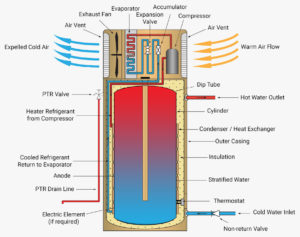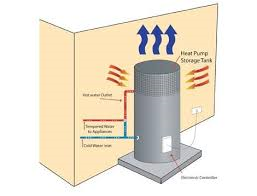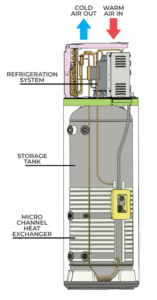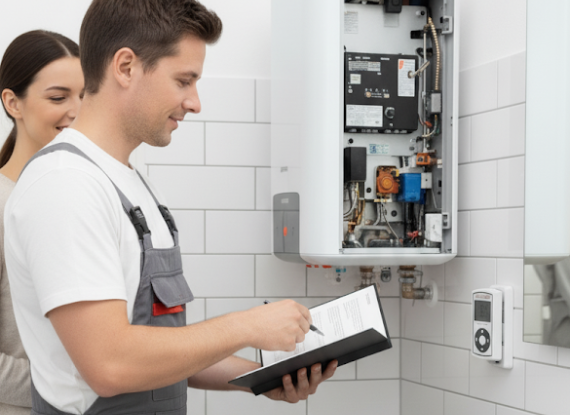Nambour Hot Water outlines how heat pumps operate through several stages that make them very efficient at warming water.
First, a liquid refrigerant travels through an evaporator where it draws heat from the ambient air and vaporises into a gas.
Next, an electric compressor compresses the gas, increasing its temperature so it becomes hotter than the water in the cylinder.
The heated gas then passes into a condenser, where it releases its heat into the water and condenses back into a liquid.
That liquid moves through an expansion valve, which reduces its pressure and cools it so it can return to the evaporator and repeat the cycle.
Electricity powers the compressor and the fan, but unlike a conventional electric hot water system that directly heats the water, a heat pump moves heat from the air into the water. This makes it capable of transferring a lot more heat energy while using significantly less electricity. Performance varies with outside air temperature: when the air is warmer than the refrigerant the system absorbs and transfers heat easily; in cooler conditions efficiency falls, though some modern models are engineered to work in sub-zero temperatures. In certain situations they can also be installed indoors in large ventilated spaces like garages.
To maintain continuous heat absorption at the evaporator, a constant supply of fresh air is required. A built-in fan circulates air and expels the cooled air back outside.
There are two primary configurations for heat pump water heaters.
Integrated or compact units house the compressor and storage tank together in a single appliance.
Split systems separate the tank and compressor—akin to a split air conditioner—and link them with refrigerant piping.
Nambour plumber services can advise on the best hot water systems for installation, repairs, and whether gas and electric options suit your home.






